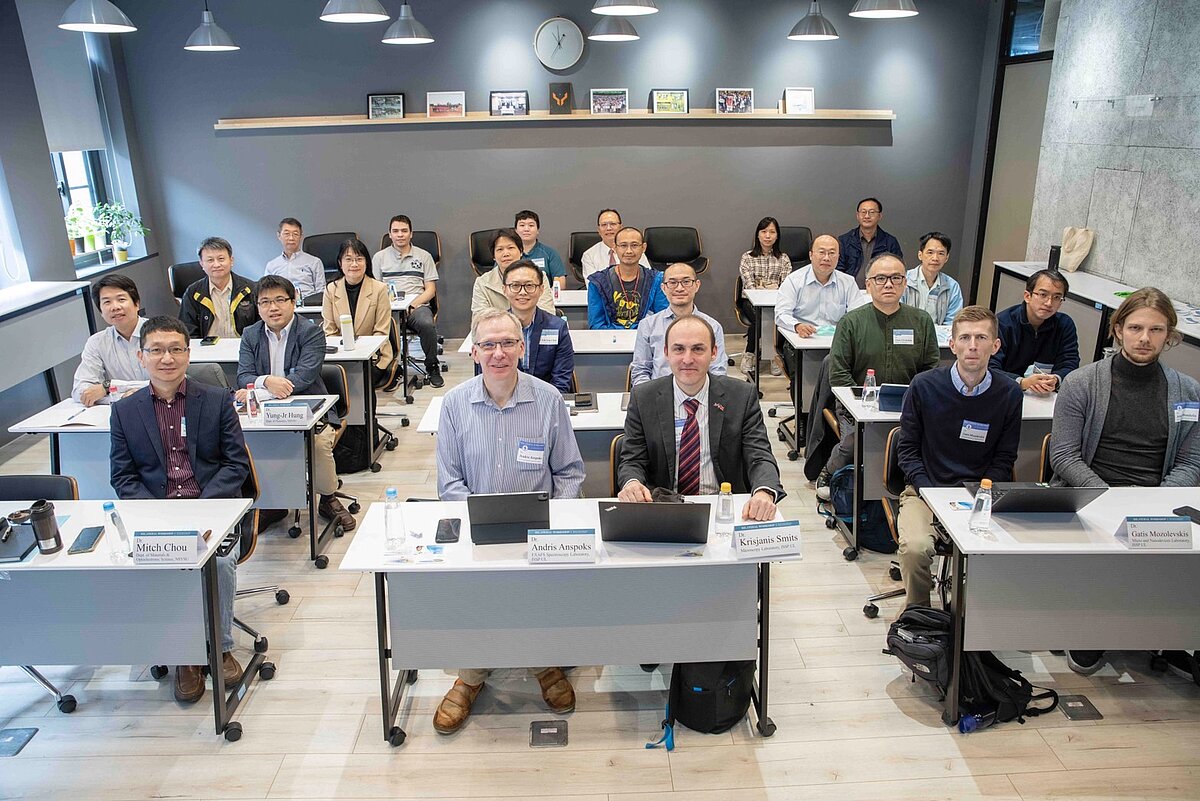
From 12 – 15 December, 2022 researchers of the Institute of Solid State Physics of the University of Latvia (ISSP UL), director Dr.phys. Andris Anspoks, scientists Ph.D. Arturs Bundulis, Dr.sc.ing. Gatis Mozoļevskis and Dr.phys. Krišjānis Šmits visited the National Sun Yat-Sen University of Taiwan (NSYSU). The purpose of the visit was to discuss the possibilities of scientific cooperation between Taiwan and Latvia and the future development of international cooperation.
During the visit, a seminar was organized where researchers from ISSP UL and NSYSU presented their main research directions and shared their latest scientific works. In addition, individual meetings with NSYSU researchers were also scheduled for each ISSP UL researcher.
This was a very productive meeting that already established a base for future collaboration in multiple directions:
- Communications regarding collaborations on electrochemical biosensors and organs on a chip were initiated with the Institute of Medical Sciences and Technologies and the Institute of Precision Medicine, respectively.
- The research projects that had already been submitted in collaboration with ISSP UL and NSYSU Department of Materials and Optoelectronic Science were evaluated and further collaboration in the area of SERS sensors as well as additional optical material research in the Microscopy laboratory of ISSP UL were discussed.
- Discussion took place regarding the possibility of collaborating with one another on the development of electron microscopy methods. As well as opportunities for student exchange in the field of electron microscopy at ISSP UL for those interested in conducting research in the field of materials
- Arrangements regarding the research of new optical materials and the capabilities of nonlinear optical characterization offered by ISSP UL in order to search for new and potentially useful materials for photonics. This could then be further integrated into our effort to create a platform for polymer photonics in ISSP UL.
- The majority of the work being done by ISSP UL right now is concentrated on the fabrication of polymer photonic devices; consequently, given the expertise that NSYSU possesses in the area of inorganic photonic device characterization, a collaboration in this area has been initiated.
In addition to the existing collaborations, several NSYS material research and physics laboratories were visited, and extensive further collaboration opportunities for cooperation in new directions were identified.
We would like to thank NSYSU for their hospitality and for providing us with the opportunity to learn not only about your university and scientific research but also about the culture of your nation.